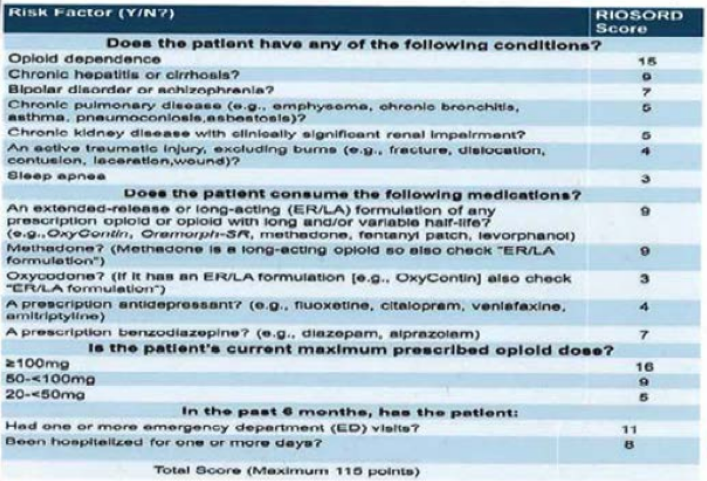Article
3 Opioid Overdose Reversal Facts Health-System Pharmacists Should Know
Author(s):
Health-system pharmacists can expect to see naloxone play an increasingly important role in their practice.
Considering that there has been a 400% increase in opioid overdoses in the last decade, health-system pharmacists can expect to see naloxone play an increasingly important role in their practice.
At a recent pharmacy conference, only a handful of pharmacists indicated that they or the physicians in their health system prescribed naloxone; meanwhile, nearly 10% of the US population aged 12 years and older has a substance abuse or dependence problem and may benefit from having access to naloxone.
Juliana Zschoche, PharmD, an emergency medicine clinical pharmacy specialist at Johns Hopkins Hospital, told Pharmacy Times that the role of the health-system pharmacist in managing opioids is similar to the role he or she plays with other medication classes.
“We should be assessing whether it’s appropriate, what the dose is, and what the side effects are,” Dr. Zschoche said. “We want to ensure that patients are using it as safely as possible [and] getting the most efficacy at the lowest dose possible.”
Health-system pharmacists should also assess whether opioids will be used in the short term or in the long-term, and nonopioid analgesic options should be considered. Plus, pharmacists can work with prescribers to think about the quantity of opioids needed for a prescription.
In addition, Dr. Zschoche noted that pharmacists can educate prescribers that there isn’t a 1:1 conversion when switching between different opioids, so providers can ensure patients are getting the right dose.
Prescription drug monitoring programs are also critical to ensuring that patients aren’t abusing drugs, as well.
Suzanne A. Nesbit, PharmD, BCPS, CPE, a clinical pharmacy specialist in pain and palliative care from Johns Hopkins Hospital, added that there has been a concerning spike in fentanyl use in the last few years, and unintentional fatal overdoses are on the rise. Some patients with substance disorders who are used to a certain amount of heroin each day may receive a dose that’s laced with fentanyl, and then their usual dose becomes lethal, Dr. Nesbit noted.
Although the use of naloxone as an opioid overdose antidote is becoming more prevalent, it isn’t new. For example, Dr. Nesbit mentioned the 2008 community coalition, Project Lazarus, which is a public health model that revolves around drug overdose prevention, naloxone use, and community building and monitoring.
There are still some challenges and opportunities for naloxone education, so here are 3 things pharmacists should keep in mind when dealing with the opioid overdose antidote.
1. There may be a variety of obstacles on both the patient and provider side to naloxone access.
For instance, there may be complications with billing, including using insurance versus cash, as well as the use of naloxone by a patient versus a bystander. Dr. Nesbit noted that there have also been intermittent naloxone shortages.
There may be some confusion among providers and patients about which route of administration to pursue. Until recently, naloxone was only available as an injectable.
There has been some discussion about whether all patients prescribed opioids should also receive a prescription for naloxone, or whether providers should use risk assessments to determine who requires a naloxone prescription. Patients may believe there’s stigma associated with naloxone use, so education about the antidote should be presented in a way that doesn’t offend or upset the patient.
2. There are several ways to assess a patient’s risk for opioid overdose or respiratory depression.
Dr. Nesbit highlighted the risk index for overdose or serious opioid-induced respiratory depression (RIOSORD) as a good resource.
Pharmacists can assess patients using the following criteria and determine their RIOSORD score; any patient in the 50- to 55-point range faces a 75% chance of experiencing respiratory depression or overdose, according to Dr. Nesbit.

3. Patient education is key.
Patients should be educated on the signs to watch for during an overdose, how to administer the naloxone product, and what they should do after administration. Family and friends should also be educated on how to administer naloxone, since the individual experiencing an overdose won’t be able to give himself or herself the product.
Pharmacists and other health care providers should also discuss which route of administration to prescribe while paying special attention to cost. Some patients might prefer the nasal spray option, but they may find the cost too steep (roughly $120 for a pack of 2).
Another option, the naloxone auto-injector, has audio instructions on how to administer the product, which might be easier for some patients to understand than written instructions. However, a pack of 2 would cost somewhere around $600.
Dr. Nesbit noted that some individuals who witness a drug overdose may try using some alternative measures, such as immersing affected individuals in ice-cold baths or pouring cold water on them, slapping them, or injecting them with salt. What should be emphasized instead is rescue breathing and calling 911 and emergency medical services after administering naloxone.





